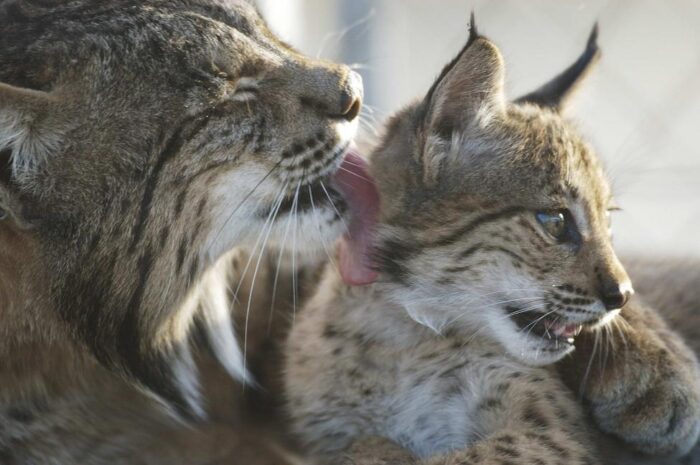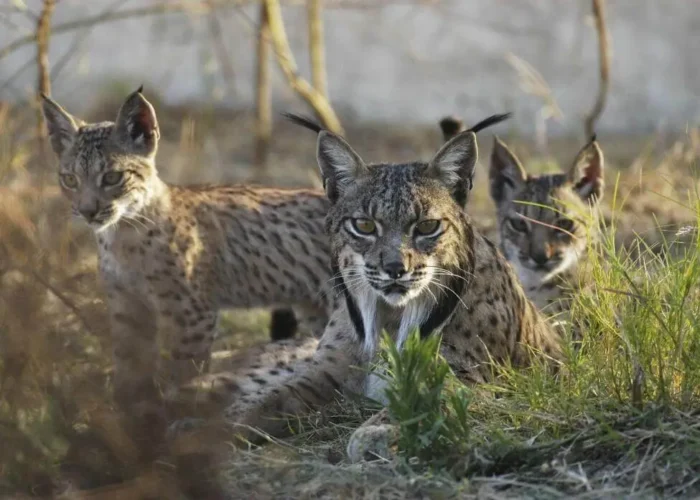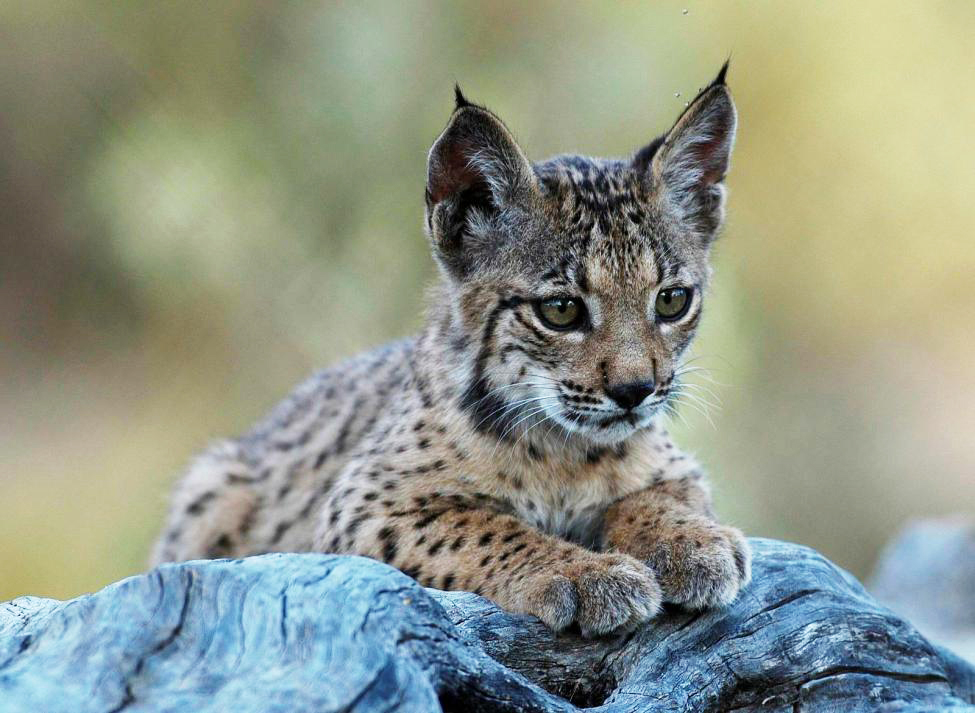Twenty years ago, the Iberian lynx almost disappeared from the planet, but the species has now come back from the brink. Once one of the world’s rarest cats, the Iberian lynx (Lynx pardinus) has now officially escaped the Endangered list.

A mother lynx cleaning her cub. Photo: Creative Commons
According to the International Union for Conservation of Nature (IUCN), the modestly sized, tufted-eared cats’ population dwindled to just 62 adults in 2001. That desperate situation has turned a corner, though, and mature Iberian lynx now number around 648. (The IUCN estimates the total population at around 2,000, including kittens.)
Still ‘Vulnerable’
Those numbers are still relatively meager. Famously rare snow leopards still soundly outnumber Iberian lynxes, at somewhere between 4,000-6,500. And the lynxes’ official status has only improved from “Endangered” to “Vulnerable.”
But the effort marks a resounding success in habitat engineering and harm reduction.
“The greatest recovery of a cat species ever achieved through conservation, this success is the result of committed collaboration between public bodies, scientific institutions, NGOs, private companies, and community members including local landowners, farmers, gamekeepers and hunters,” said Francisco Javier Salcedo Ortiz, Coordinator of the LIFE Lynx-Connect project, which funded and led the work.

Iberian lynx family. Photo: Animalia.bio
The IUCN attributes the recovery to several factors. Ortiz’s team sought to protect and restore Mediterranean scrub and forest habitat, decrease Iberian lynx fatalities from human activity, and increase the abundance of its main prey species, the endangered European rabbit.
Threats still remain. Recent viral outbreaks have decimated European rabbits, culling some populations by an estimated 60-80%. Diseases from domestic cats can also spread to Iberian lynx, and road kill and poaching remain dangers.
Experts are countering those challenges with a parallel effort to expand the lynx population’s genetic diversity. Breeding programs and translocations have been key pieces of the conservation efforts. So has reintroduction, with 400 cats added to wild lands since 2010.
Though the cats have added 450 square kilometers to their existing 3,320 square km territory in Portugal and Spain, the work isn’t over yet. The IUCN Green Status of Species — different from the Red List — still lists the Iberian lynx as Largely Depleted. If focused efforts continue, though, the organization said a path to full recovery is feasible.
It’s a remarkable turnaround for a cat that almost lost its habitat and its cornerstone prey species.






